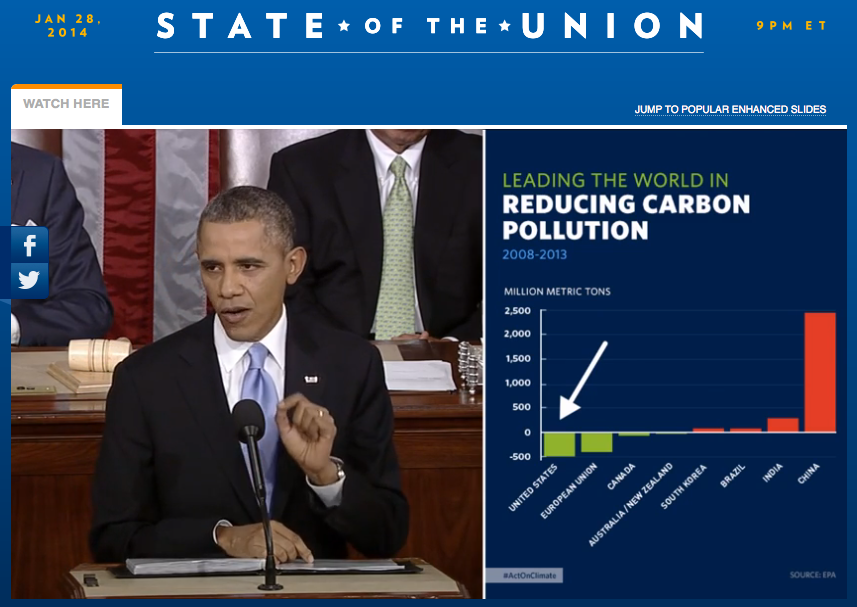Americans who watched President Barack Obama’s State of the Union address on the live White House stream had a fundamentally different experience than those who watched it on television. At whitehouse.gov, there was a split screen: on the left was the same video feed the rest of the country was seeing, while on the right were a series of well-designed graphs, photos, charts and bullet points that reinforced the president’s arguments.
It was a very effective tactic, even if many of the “facts” were misleading. To a general viewer, not mired in the details of politics and policy, the use of visual aids can be very convincing. There were charts that “proved” the president’s claims about his accomplishments, and pictures that connected viewers more directly with people the president highlighted in his remarks. Even this skeptical viewer found the presentation more compelling.
The Republican response, while ably delivered by Rep. Cathy McMorris Rodgers (R-WA), was a typical straight-to-camera set piece. So, too, was the Tea Party response by Sen. Mike Lee (R-UT)–which, for all its powerful rhetoric, was another straight-to-camera monologue. The live stream showed Sen. Lee fidgeting for several moments before he actually began his remarks. There has to be a better way to integrate text and technology.
Obama was short on substance but won on style. There’s no longer any excuse for that. Here are a few ideas for conservatives. Start using visual media to add production value to the State of the Union responses. Use charts–even cardboard ones, if necessary–to deliver counter-arguments. Perhaps a split-screen during the State of the Union, with contrary points presented next to the president’s remarks, would be useful. It’s time to get creative.

COMMENTS
Please let us know if you're having issues with commenting.